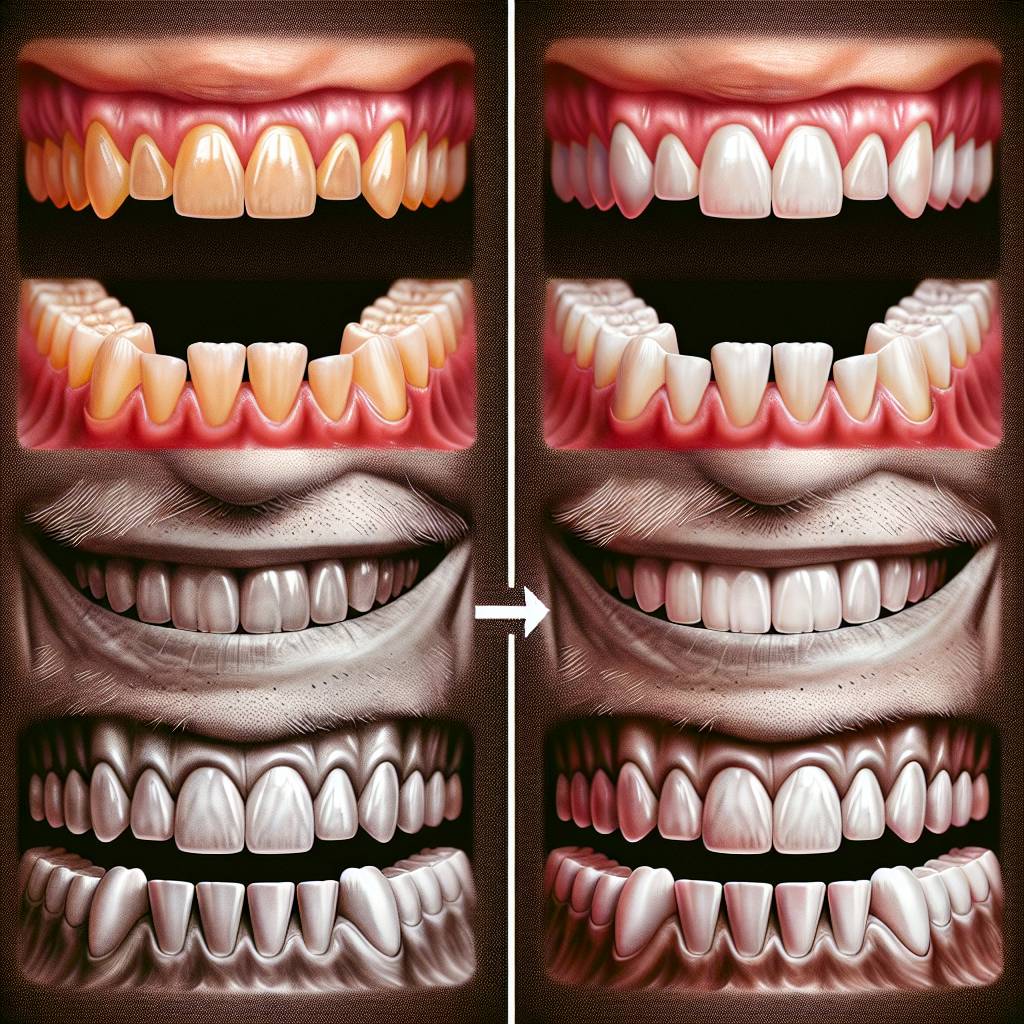Braces are a common orthodontic treatment used to shift teeth into alignment. After the braces are removed, it is important to know how fast your teeth can shift back to their original positions. In this article, we will discuss the timeline of how quickly your teeth can move after braces and what you can do to prevent them from shifting.The speed at which teeth shift after braces can vary depending on the individual. Generally, the teeth can shift up to two millimeters per month while wearing braces. However, this rate of movement can be affected by the type of braces used and how well an individual follows their orthodontic instructions.
What Factors Affect Teeth Shifting After Braces?
After braces are removed, the teeth may shift due to a number of factors. Orthodontists typically recommend that patients wear retainers after their braces are removed to help prevent teeth shifting. Retainers are custom-made appliances that help to maintain the position of the teeth. However, there are other factors that can cause teeth shifting even with the use of retainers.
One factor that affects teeth shifting is the growth and development of the jawbone. As people age, their jawbone continues to grow and develop which can cause the teeth to shift out of alignment. This is particularly true in younger patients who still have growing bones.
Another factor that affects teeth shifting is poor oral hygiene. If you do not keep up with your oral hygiene routine, plaque and tartar can build up on your teeth which can lead to them shifting out of alignment over time. It is important to brush and floss regularly in order to maintain healthy dental hygiene and prevent tooth shifting after braces.
A third factor that affects tooth shifting is muscle imbalance in the jaw muscles. When certain muscles in the jaw become too strong or too weak compared to others, this creates an imbalance which can cause tooth shifting over time. This is why it is important for orthodontists to monitor muscle balance throughout treatment and make adjustments as needed in order to prevent tooth shifting after braces are removed.
Finally, genetics can also play a role in tooth shifting after braces are removed. Genetic factors such as facial shape, size of mouth opening, and size of teeth can all affect how quickly or how slowly your teeth shift out of alignment after treatment ends.
Overall, there are a number of factors that affect tooth shifting after braces are removed including jaw growth, poor oral hygiene, muscle imbalance, and genetics. It is important for orthodontists to monitor these factors throughout treatment in order to ensure optimal results after treatment ends.
Are There Ways To Prevent Teeth From Shifting After Braces?
Once you have undergone orthodontic treatment with braces, there are steps you can take to protect your teeth from shifting back to their original positions. With proper care and maintenance of your braces, as well as some lifestyle choices, you can prevent your teeth from shifting after the removal of your braces.
The most important part of maintaining the position of your teeth is to wear retainers. Retainers help keep the teeth in their new positions by providing a physical barrier that prevents them from shifting back to their original positions. Your orthodontist will provide you with a retainer that is custom-made for your mouth and should be worn as prescribed.
Practicing good oral hygiene is also essential in keeping teeth in place after braces. Brushing and flossing on a regular basis helps remove plaque and bacteria from the surfaces of the teeth, reducing the risk of cavities and gum disease. In addition, regular visits to the dentist will help ensure that any problems are identified early on and treated accordingly.
Finally, it’s important to avoid certain activities that may cause teeth to shift after braces. Chewing hard foods or using your teeth as tools can put undue stress on them, causing them to shift out of place over time. It’s also important to not bite down too hard when eating or grinding your teeth at night when sleeping.
By following these steps, you can help keep your teeth in their new positions after having braces removed. If you have any questions about how best to prevent your teeth from shifting after having braces removed, be sure to speak with an experienced orthodontist who can provide further advice and support.
Orthodontic Retention and Keeping Teeth In Place After Braces
Orthodontic retention is an important part of the treatment plan for braces. It helps to ensure that teeth remain in the correct position after the braces are removed. Orthodontic retention involves wearing a retainer or other appliance to keep teeth in place, usually for a period of time after the braces have been removed. In some cases, it may be necessary to wear a retainer for several months or even years. The goal of retaining teeth is to maintain the desired alignment and prevent teeth from shifting back into their original positions.
A retainer is typically made from plastic and metal wires that fit snugly around the teeth when worn. The retainer helps to keep teeth in their correct positions by holding them in place while the surrounding tissues and bones adjust to the new alignment. It also helps to reduce the risk of relapse, which is when teeth move back into their original position after braces are removed.
It’s important to wear a retainer as prescribed by an orthodontist in order for it to be effective. Generally, retainers should be worn at night while sleeping or during times when it’s not possible to eat or drink beverages that can damage them. It’s also important to clean retainers as instructed by an orthodontist, as plaque buildup can cause discoloration and bad breath if not addressed properly.
In some cases, retainers may need to be adjusted or replaced over time as teeth move slightly due to natural changes such as growth or age-related shifts in jaw structure. Regular visits with an orthodontist can help ensure that retainers remain comfortable and effective at maintaining desired tooth alignment and preventing relapse after braces are removed.
Overall, orthodontic retention is an essential part of treatment plans for braces; it helps keep teeth in place following removal of braces and prevents them from shifting back into their previous positions due to natural changes like growth or age-related shifts in jaw structure. Wearing a retainer as prescribed by an orthodontist can help ensure that desired tooth alignment is maintained over time, reducing the risk of relapse after having had braces removed.
How To Manage Teeth Shifting After Removing Braces
After having braces removed from your teeth, it is important to take steps to prevent your teeth from shifting back into their original positions. In order to do this, it is important to understand why teeth shift after braces and what you can do to manage and prevent it.
The main reason that teeth shift after braces is because the teeth and jaw have been held in a particular position for a long period of time, which causes them to become accustomed to that shape. When the braces are removed, the teeth may not be able to stay in place as easily, meaning they may shift back into their original position.
In order to manage and prevent teeth shifting after braces, there are several steps you can take. The first step is to wear a retainer that will help keep your teeth in their new position. Your orthodontist will likely provide you with a retainer that fits your mouth perfectly, so make sure you wear it as directed.
The second step is to practice proper oral hygiene habits such as brushing twice a day and flossing daily. This will help keep plaque from building up on your teeth and causing them to move back into their original positions. Additionally, it is important to visit your dentist regularly for checkups and cleanings so that any potential problems can be addressed quickly before they become worse.
Finally, if you notice that your teeth are beginning to move out of place after wearing the retainer or following other preventive measures, speak with your orthodontist right away. They may be able to recommend additional treatments or products that will help keep your smile looking its best.
By taking the proper steps after having braces removed, you can ensure that your smile stays beautiful for years to come!

Does Age Affect How Fast Teeth Shift After Removing Braces?
The short answer to this question is yes, age does affect how fast teeth shift after braces have been removed. As we age, our teeth naturally move and shift over time, and the same is true when braces are removed. The rate of movement is determined by a variety of factors including age, the type of orthodontic treatment used, and the type of retainer that is worn to keep the teeth in place.
Younger patients tend to experience more rapid movement of their teeth after braces are removed because their bones are still developing and, therefore, more prone to shifting. Additionally, younger patients may not be as compliant with wearing their retainers as they should be and this can lead to a quicker rate of movement.
Older patients may experience less movement after braces are removed due to the fact that their bones have stopped growing and are less likely to move or shift. Additionally, older patients may be more compliant with wearing their retainers which can help keep their teeth in place longer than with younger patients who may not wear them as often or for as long as they should.
No matter what your age is, it is important to wear your retainer as prescribed by your orthodontist in order to maintain the results you achieved from wearing braces. Wearing your retainer regularly will help ensure that your teeth don’t move back into their original positions after your braces have been removed.
It is also important to visit an orthodontist regularly for check-ups so they can monitor any changes in the alignment of your teeth and make adjustments if needed. Taking these steps will help you maintain a healthy smile for years to come!
Consequences of Not Retaining Your Teeth Post-Braces
Not retaining your teeth post-braces can lead to a number of different consequences, all of which can have long-term negative effects on your dental health. Without the proper retention, your teeth may move back into their pre-braces positions, undoing all the hard work and effort put into straightening them in the first place. This not only means you’ll need to go through a second round of braces, but it could also make the teeth harder to straighten as they age.
In addition to having to go through another round of treatment, you could also experience additional dental problems related to misalignment. For example, teeth that are crooked or overlapping may trap food particles more easily and cause an increase in plaque build-up and tooth decay. You may also be at higher risk for gum disease due to increased difficulty brushing and flossing properly with crooked teeth.
The lack of proper retention could also lead to speech impediments as well as decreased self-confidence due to the appearance of crooked or crowded teeth. In these cases, it’s important to speak with an orthodontist about how best to maintain your results after braces so that you don’t have to experience any of these negative consequences down the road.
Do Clear Aligners Cause Teeth To Shift Faster Than Traditional Metal Braces?
The answer to this question is yes, clear aligners can cause teeth to shift faster than traditional metal braces. Clear aligners are made of a thin, transparent plastic material that fits snugly over the teeth, and they work by gently shifting the teeth into their desired position. This type of orthodontic treatment is much less uncomfortable and more aesthetically pleasing than metal braces, which can be uncomfortable and often draw unwanted attention. Furthermore, clear aligners are designed to move the teeth in small increments, so the process of shifting the teeth into their desired position is often faster than with traditional metal braces.
Clear aligners also have an advantage in that they can be taken out when eating or brushing your teeth, whereas metal braces cannot. This allows for better oral hygiene and enables you to maintain a healthy smile while undergoing orthodontic treatment. Additionally, clear aligners require fewer adjustments than traditional metal braces, which also contributes to quicker results.
In general, clear aligners are a great option for those who want to quickly achieve a straighter smile without having to wear metal braces for long periods of time. The fact that they are removable makes them easier to care for and helps ensure that your teeth stay healthy throughout the process. However, it’s important to note that even though clear aligners may cause your teeth to shift faster than traditional metal braces, it’s still important to follow your orthodontist’s instructions closely in order to achieve the best possible results.

Conclusion
After braces, your teeth can shift quite fast depending on the type of braces you have. If you have removable braces, then it is recommended that you wear them as much as possible to prevent teeth from shifting out of alignment. If you have permanent braces, your teeth should not move fast because the brackets and wires are keeping them in place. It is important to get regular check-ups with your orthodontist to ensure that your teeth are moving at the correct speed and in the right direction. In addition, maintaining good oral hygiene habits such as brushing and flossing twice daily can help keep your teeth healthy and prevent any unexpected shifts.
Overall, it is important to understand that after braces, your teeth may shift faster than expected. If this happens or if you feel like they are shifting too quickly, it is important to contact your orthodontist and get a check-up. Your orthodontist can assess the situation and determine what steps need to be taken in order to ensure that everything is progressing smoothly.

